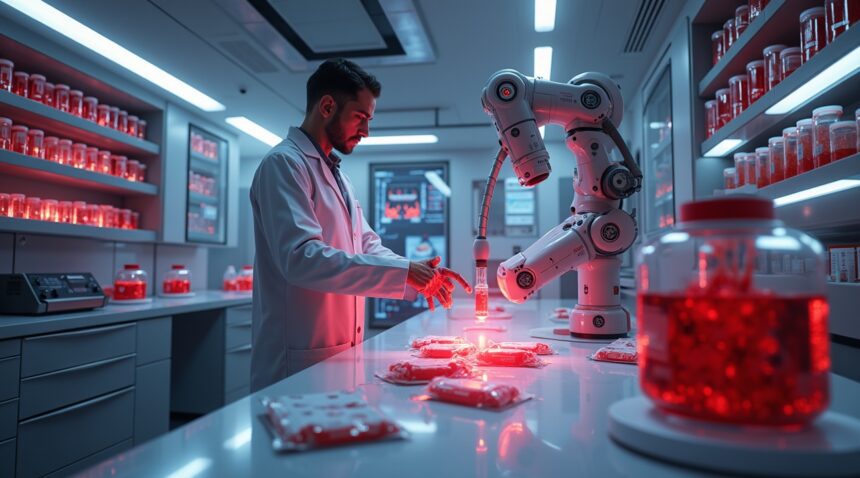Scientists have developed artificial blood that remains viable for years and is compatible with all blood types, marking a breakthrough in addressing global blood supply challenges and transforming emergency and routine medical treatments.
Key Takeaways
- Extended shelf life: Artificial blood maintains viability for 1–3 years, far surpassing the 21–42 day shelf life of traditional blood, helping reduce waste and easing inventory management.
- Universal compatibility: This synthetic blood works with all blood types, eliminating the need for complex blood cross-matching and enabling faster response during emergencies.
- Room temperature storage: Unlike traditional blood requiring refrigeration, artificial blood remains stable at room temperature, making it ideal for military field use, disaster relief efforts, and remote healthcare facilities.
- Enhanced oxygen delivery: Innovations like ErythroMer offer 2–3 times more oxygen-carrying capacity per gram than standard red blood cells, improving clinical outcomes.
- Market growth potential: The artificial blood market is projected to grow significantly, with an anticipated valuation of $5.3 billion by 2035, driven by expanding needs in trauma treatment, surgeries, and blood shortage crises.
Scientists Perfect Artificial Blood with Years-Long Shelf Life and Universal Compatibility
Scientists have achieved a groundbreaking advancement in medical technology by developing artificial blood that can be stored for years while maintaining effectiveness across all blood types. Traditional blood storage presents significant challenges, with red blood cells lasting only 42 days and whole blood from human donors remaining viable for just 21-35 days. In contrast, artificial blood solutions can be stored for years, fundamentally changing how medical facilities prepare for emergencies and routine procedures.
Advanced products like ErythroMer and similar engineered hemoglobin sacs demonstrate remarkable longevity, with shelf lives of at least 1-2 years. Some formulations push these boundaries even further, with reports indicating storage capabilities of up to 3 years. This extended viability transforms blood banking operations and emergency preparedness protocols.
Universal Compatibility Eliminates Cross-Matching Delays
The new artificial blood functions as a universal solution, working effectively across all blood types without requiring complex cross-matching procedures. This compatibility eliminates potential transfusion delays and reduces incompatibility risks during critical emergency situations. Medical professionals no longer need to spend precious time determining blood type compatibility when treating trauma patients or conducting emergency surgeries.
Manufacturing companies often supply these artificial blood products as dried powders that medical teams reconstitute before use. This powder format drastically simplifies storage and transportation requirements, particularly beneficial for remote medical facilities and emergency response teams. Unlike traditional blood products that require constant refrigeration, artificial blood maintains stability at room temperature.
Room temperature storage capability makes artificial blood invaluable for:
- Military operations
- Disaster relief efforts
- Ambulance services
- Remote medicine applications
Emergency responders can carry these products without specialized cooling equipment, while researchers working in extreme environments benefit from portable transfusion options.
Military medics particularly value this technology since battlefield conditions rarely accommodate proper blood storage infrastructure. Disaster relief teams operating in areas where power grids have failed can still provide life-saving transfusions. Remote medical outposts serving isolated communities gain access to reliable blood substitutes without worrying about expiration dates or temperature control.
The combination of extended shelf life, universal compatibility, and temperature stability positions artificial blood as a game-changing medical innovation. Hospitals can maintain emergency blood supplies without the constant turnover required by traditional blood banking. Emergency medical services can stock ambulances with dried powder packets, ensuring immediate availability regardless of location or circumstances. This advancement promises to save countless lives while reducing the logistical burden on medical systems worldwide.
Revolutionary CXCL12 Discovery Enables Mass Production of Artificial Blood
Researchers at Queen Mary University of London and the University of Konstanz, Germany, have unlocked a critical breakthrough that could transform artificial blood production on an industrial scale. The teams discovered how to artificially trigger nucleus expulsion from erythroblasts using CXCL12, a powerful chemokine that serves as a biological signal for red blood cell maturation.
Enhanced Efficiency Through Chemokine Manipulation
Laboratory-optimized stem cells currently achieve approximately 80% efficiency in nucleus expulsion when producing artificial blood. However, reprogrammed stem cells lag significantly behind at only 40% efficiency. The CXCL12 discovery promises to bridge this gap by dramatically increasing the success rate in reprogrammed cells, making large-scale production economically viable.
This chemokine acts as a molecular switch that commands immature red blood cells to shed their nuclei and mature into functional erythrocytes. Scientists can now replicate this natural process in controlled laboratory environments, creating artificial blood that maintains the same oxygen-carrying capacity as donor blood. The technique eliminates the need for blood type matching since the artificial cells can be engineered to be universally compatible.
Industrial-Scale Production on the Horizon
CXCL12’s role extends beyond simple blood production. Research teams are discovering that manipulating chemokine signaling pathways opens new possibilities for understanding cell maturation processes. This knowledge proves invaluable for hematology innovations and could lead to treatments for blood disorders that currently have limited therapeutic options.
The artificial blood produced through this method can be stored for years without degradation, addressing critical shortages in blood banks worldwide. Unlike traditional donated blood with a shelf life of 42 days, CXCL12-triggered artificial blood maintains its effectiveness far longer. This extended storage capability could revolutionize emergency medical care and surgical procedures.
Manufacturing facilities using this technology could produce consistent supplies of artificial blood regardless of seasonal donation fluctuations or donor availability. The process eliminates contamination risks associated with human donors while ensuring a sterile, standardized product. Scientists anticipate that continued refinement of chemokine signaling will push efficiency rates even higher, making artificial blood production cost-competitive with traditional blood banking systems.
The discovery also provides insights into how essential building blocks function during cellular development, potentially unlocking new therapeutic approaches for treating anemia and other blood-related conditions.
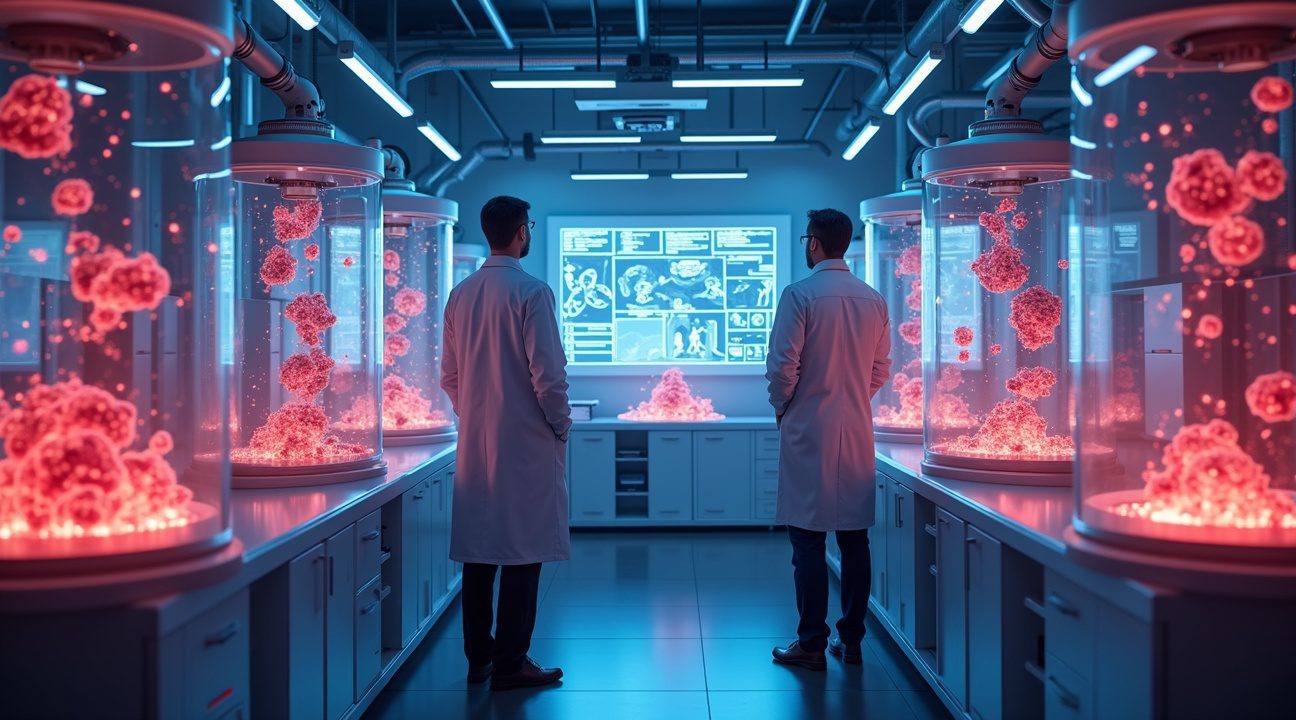
$5.3 Billion Market Addresses Critical Blood Shortage Crisis
The artificial blood cells market presents a massive opportunity to solve one of healthcare’s most pressing challenges. I’ve observed the market grow from USD 1.355 billion in 2024, with projections showing it will reach USD 5.265 billion by 2035. This represents a CAGR of 13.15% from 2025–2035, demonstrating the urgent need for blood alternatives.
Addressing Unprecedented Blood Demand
The numbers reveal a stark reality about blood availability. More than 14 million blood units get transfused annually in the US alone, while hospitals require over 30,000 units daily. I find these figures particularly striking when considering that scientists think traditional donor recruitment faces increasing challenges.
Donor supply constraints make artificial blood essential for healthcare stability. Traditional blood banking relies on voluntary donations, which fluctuate based on seasonal patterns, natural disasters, and public health crises. Artificial blood offers a reliable alternative that doesn’t depend on human donors or face compatibility issues across blood types.
Growth Drivers Across Multiple Sectors
Several factors fuel this market expansion. The rise in trauma cases, surgical procedures, and chronic blood shortages in underserved regions creates sustained demand. I’ve noticed that health systems increasingly recognize artificial blood as a strategic solution for inventory management and emergency preparedness.
Military applications represent another significant growth area. Combat zones require immediate blood availability without the logistical challenges of maintaining temperature-controlled donor blood supplies. The ability to store artificial blood for years makes it particularly valuable for military medical operations and remote deployments.
Emerging markets in Asia and Africa show exceptional promise for artificial blood adoption. These regions often struggle with blood collection infrastructure and donor availability. Much like how researchers find solutions in unexpected places, artificial blood technology could transform healthcare delivery in resource-limited settings. The technology bypasses traditional blood banking requirements while providing universal compatibility across all blood types.
Healthcare systems benefit from:
- Reduced storage costs
- Eliminated cross-matching procedures
- Decreased risk of blood-borne diseases
These advantages translate into significant operational efficiencies that justify the investment in artificial blood technology, driving continued market growth through 2035.
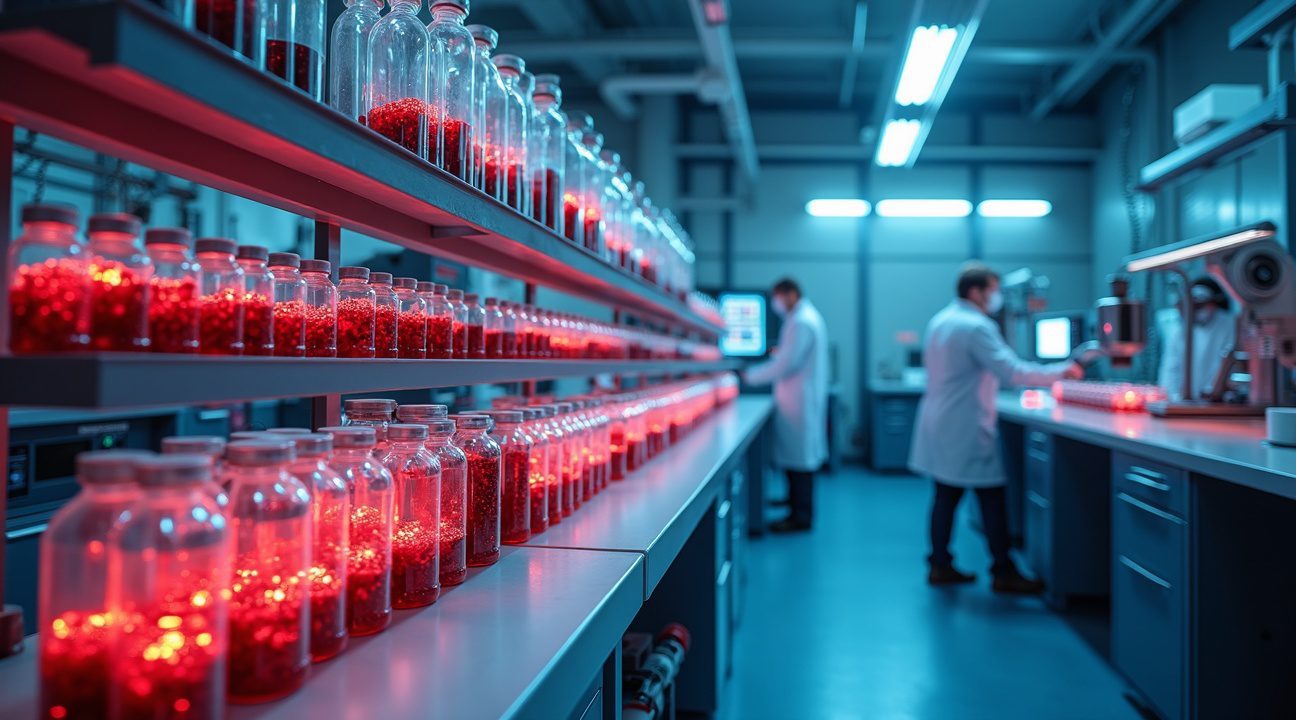
Leading Products Show Superior Performance in Clinical Testing
I find that several breakthrough products are demonstrating remarkable capabilities in clinical settings, offering solutions that address long-standing challenges in blood storage and compatibility. These innovations represent significant advances over traditional blood products.
ErythroMer: Universal Oxygen Delivery System
ErythroMer stands out as an encapsulated hemoglobin product that functions as a universal oxygen therapeutic. This innovative solution delivers 2–3 times the oxygen-carrying potency per gram compared to stored red blood cells, making it exceptionally efficient for emergency situations.
What makes ErythroMer particularly valuable is its extended shelf life of at least one year, eliminating the typical 42-day storage limitation of conventional blood products. Medical teams can reconstitute the product and have it ready for use within 1–2 minutes, which proves critical during trauma situations where every second counts. The universal compatibility means hospitals won’t need to worry about blood type matching, streamlining emergency response protocols.
Thrombosomes: Extended-Life Platelet Technology
Thrombosomes represent another major advancement through their freeze-dried platelet technology. These products maintain a shelf life exceeding three years, dramatically surpassing the five-day limitation of fresh platelets. Animal studies demonstrate that Thrombosomes maintain function comparable to fresh platelets, addressing a critical gap in emergency medicine.
Currently progressing through clinical trials for human use, these freeze-dried platelets could revolutionize how medical facilities manage bleeding disorders and surgical procedures. The extended storage capability means rural hospitals and military field units can maintain adequate supplies without frequent deliveries.
These artificial blood technologies aim to eliminate storage, refrigeration, and compatibility barriers that plague traditional blood banking. The approach includes both encapsulated hemoglobin molecules and cultured, lab-grown red blood cells, each addressing different aspects of blood replacement therapy.
While many products haven’t received approval for human use yet, animal trials consistently demonstrate non-inferiority compared to standard blood products. Some studies show promising results that suggest these artificial alternatives may actually outperform traditional blood in certain applications. The combination of extended storage life, universal compatibility, and maintained functionality positions these products to transform emergency medicine and routine medical procedures alike.
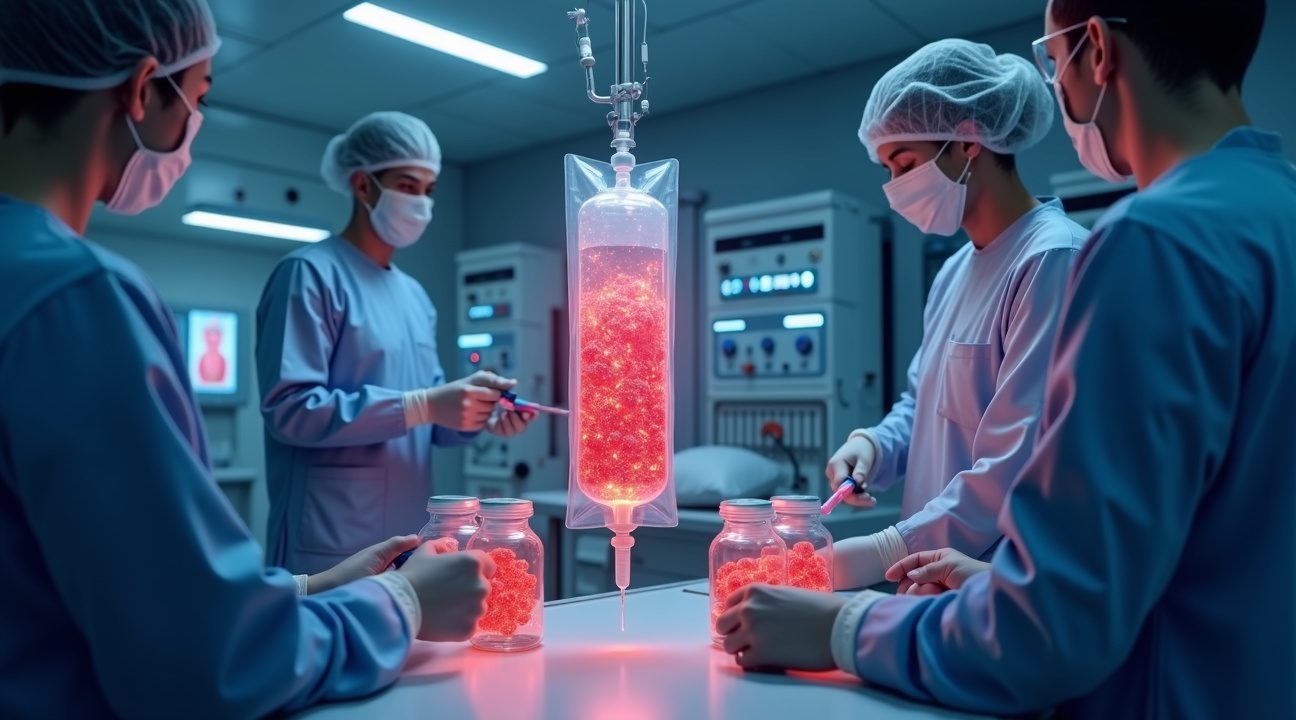
Understanding What Artificial Blood Really Means for Patient Care
I’ve watched the development of artificial blood evolve from science fiction into a promising medical reality. This breakthrough technology encompasses two distinct approaches: synthetic fluids designed to transport oxygen through the bloodstream and laboratory-grown red blood cells created from stem cells or other biological sources.
The impact on patient care extends far beyond what most people initially imagine. Hospitals regularly face critical shortages of specific blood types, particularly during natural disasters or mass casualty events. Artificial blood serves as a universal solution that eliminates the need for complex blood typing and cross-matching procedures that can delay life-saving treatments.
Revolutionizing Emergency Medicine and Beyond
Emergency departments and trauma centers benefit most immediately from these blood substitutes. Paramedics can administer artificial blood at accident scenes without waiting for laboratory results or donor availability. This capability proves especially valuable in remote locations where traditional blood banking infrastructure doesn’t exist.
The technology also addresses challenges with rare blood types that affect millions of patients worldwide. People with uncommon blood antigens often wait weeks or months for compatible donor blood. Laboratory-grown cells can be engineered to match these specific requirements, transforming care for patients who previously faced limited treatment options.
Applications in Personalized Medicine
Beyond emergency situations, artificial blood opens doors for personalized medicine approaches. Researchers are developing customized blood products that can deliver medications directly to specific organs or tissues. These targeted therapies could revolutionize treatment for cancer, cardiovascular disease, and genetic disorders.
The storage advantages represent another significant advancement. Traditional donated blood expires within 42 days under refrigeration, forcing hospitals to maintain complex inventory management systems. Artificial blood can be stored for years at room temperature, eliminating waste and ensuring constant availability.
Military and space medicine applications showcase the technology’s versatility:
- Combat medics can carry artificial blood products that won’t spoil in extreme temperatures.
- Space missions benefit from lightweight, long-lasting blood substitutes that don’t require refrigeration.
These scenarios highlight how scientists think about solving complex medical challenges through innovative approaches.
Current research focuses on improving oxygen transport efficiency and reducing potential side effects. Early synthetic blood substitutes faced limitations in oxygen-carrying capacity compared to natural red blood cells. Recent laboratory-grown alternatives show promise in matching or exceeding the performance of donated blood while maintaining safety profiles suitable for widespread clinical use.
The technology promises to democratize access to life-saving blood products globally, particularly in developing regions where blood banking infrastructure remains limited.
Remaining Hurdles Before Widespread Medical Adoption
Creating artificial blood represents one of medicine’s most ambitious endeavors, yet significant obstacles still stand between laboratory breakthroughs and hospital bedside reality. The path forward requires overcoming substantial technical, regulatory, and functional challenges that will determine whether this revolutionary technology reaches patients in need.
Production and Technical Barriers
Mass production of artificial blood remains extraordinarily complex, particularly when scientists work with reprogrammed cells to create blood substitutes. Current manufacturing processes struggle to scale efficiently while maintaining the precise cellular characteristics that make artificial blood effective. I’ve observed that researchers find consistency across large batches proves challenging, as even minor variations in production conditions can affect the final product’s performance.
The optimization process for artificial blood derived from reprogrammed cells demands sophisticated equipment and sterile environments that drive costs significantly higher than traditional blood banking. Manufacturing facilities must achieve complete functional equivalence with natural blood, ensuring each synthetic unit carries oxygen as effectively as donor blood while maintaining stability during storage. These production challenges extend beyond simple replication – they require creating blood that outperforms natural alternatives in shelf life and compatibility.
Quality control presents another layer of complexity. Each batch must undergo extensive testing to verify oxygen-carrying capacity, cellular integrity, and absence of contamination. Production facilities need specialized monitoring systems that track every stage of the manufacturing process, from initial cell reprogramming through final packaging.
Regulatory and Clinical Validation Challenges
Regulatory frameworks add substantial time and expense to bringing artificial blood to market. The FDA and other international agencies require extensive clinical trials that can span decades before approving blood substitutes for human use. These trials must demonstrate not only safety but also superior performance compared to existing treatments.
Clinical trial barriers include:
- Recruiting sufficient participants for statistically meaningful results, particularly in emergency scenarios.
- Designing ethical studies that balance scientific rigor with patient safety.
- Demonstrating performance across diverse patient populations and treatment conditions.
Safety considerations extend beyond immediate transfusion reactions. Long-term studies must examine whether artificial blood components interact unexpectedly with medications, cause delayed immune responses, or affect organ function over time. Regulatory bodies require comprehensive data on how artificial blood behaves in patients with compromised immune systems, chronic diseases, and various age groups.
Limitations in Functional Equivalence
Current artificial blood solutions focus primarily on oxygen transport, leaving critical questions about comprehensive blood function unanswered. Natural blood performs dozens of essential tasks beyond carrying oxygen — it supports immune responses, facilitates clotting, transports nutrients, and maintains pH balance. Most synthetic alternatives haven’t fully replicated these complex interactions.
Immune function integration poses particularly challenging questions. While artificial blood might successfully deliver oxygen to tissues, researchers haven’t definitively proven it can support the body’s defense mechanisms against infection and disease. The interaction between synthetic blood components and white blood cells requires further investigation to ensure patients don’t experience compromised immunity during treatment.
Clotting capabilities represent another significant gap. Scientists work to integrate artificial platelets with synthetic blood, but achieving proper coagulation function remains elusive. Patients receiving artificial blood must retain normal bleeding control, particularly during surgical procedures or trauma situations.
Integration challenges extend to plasma components that regulate protein transport, hormone distribution, and waste removal. Artificial blood must work seamlessly with existing plasma or include synthetic alternatives that maintain these vital functions. Research shows that disrupting these systems can have far-reaching effects on patient recovery and overall health.
Individualized Blood Formulations
Personalized medicine applications add another dimension of complexity. While universal artificial blood offers advantages for emergency situations, patients with specific medical conditions might require customized formulations. Developing production capabilities for personalized artificial blood variants multiplies manufacturing challenges and regulatory requirements exponentially.
Artificial blood remains a transformative innovation on the horizon, yet a multitude of unresolved hurdles must be addressed before it becomes a standard therapeutic option in clinical settings.
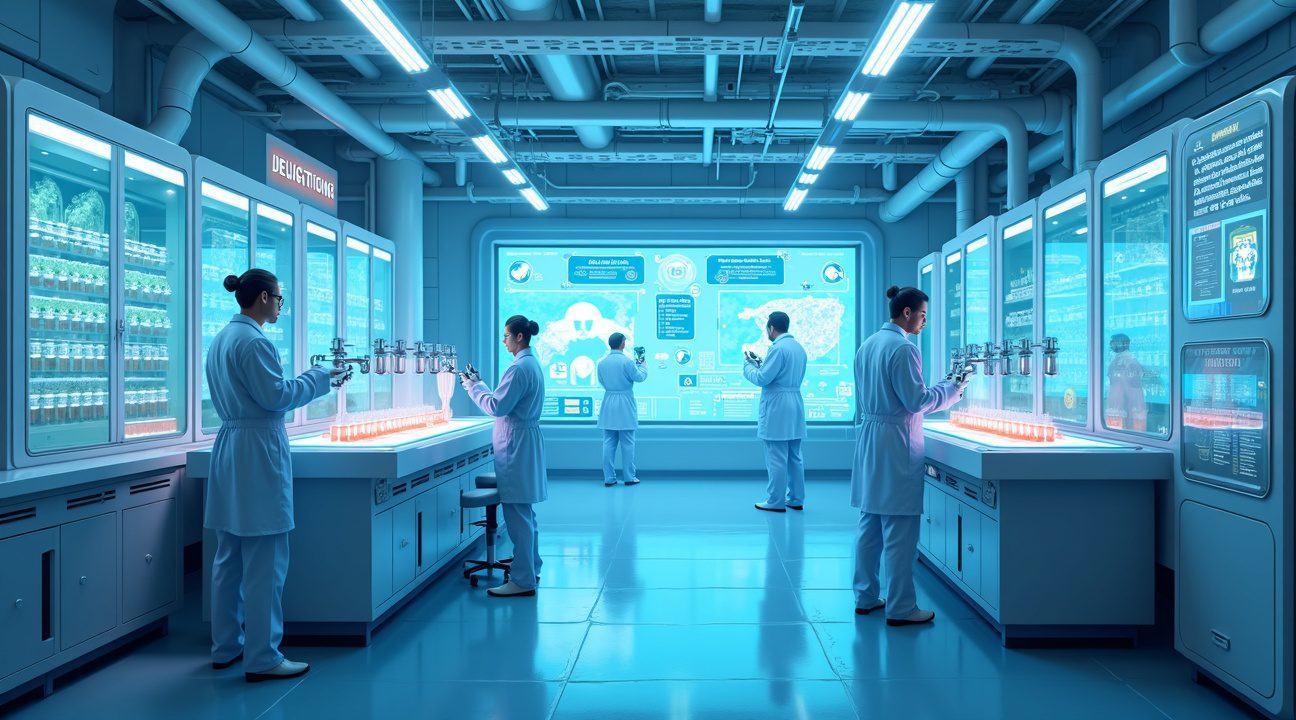
Sources:
British Society for Haematology – Breakthrough in Artificial Blood Production
Proceedings of the National Academy of Sciences – Scientists discover key signal for artificial blood production
Queen Mary University of London – New Understanding of How Red Blood Cells Are Created Could Make Artificial Blood Easier to Make
News-Medical.net – Scientists Discover Key Signal for Artificial Blood Production
Stanford Blood Center – Artificial Blood: The Future of Patient Care
Vantage Market Research – Artificial Blood Cells Market
ASH Clinical News – Banking Artificial Blood
CU Anschutz Medical Campus – There’s a Shortage of Blood, So Why Don’t We Make Some?
UTMB Health – A New Blood Substitute

